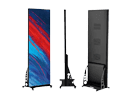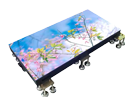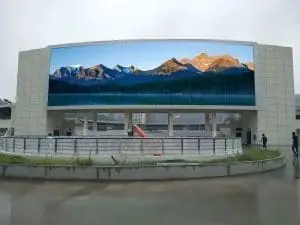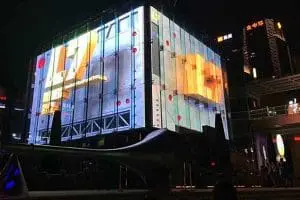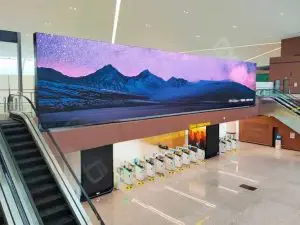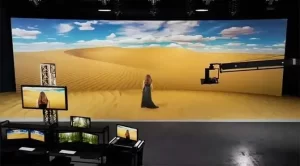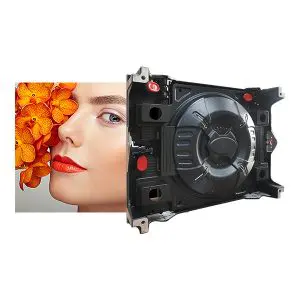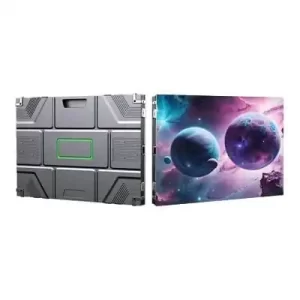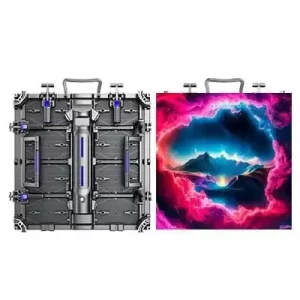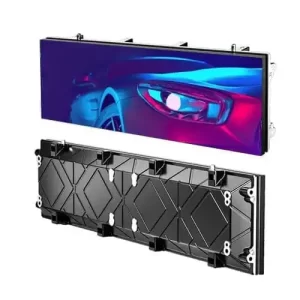LED video walls are everywhere—from flashy indoor retail stores to enormous displays in stadiums and on city streets. But a common question for businesses, event planners, and city developers alike is: can LED video walls be used outdoors?
The short answer is yes. But not all LED video walls are designed to survive, or perform well, outside. When it comes to outdoor installations, there are important technical, environmental, and visual factors to consider that go well beyond simply mounting a screen outside.
Here’s a comprehensive look at what makes an LED video wall suitable for outdoor use, how it differs from indoor models, and what you need to plan for if you’re considering investing in one.
What Makes an LED Video Wall Suitable for Outdoor Use?
Not all LED displays are built to withstand the elements. To function properly outdoors, LED video walls must be engineered to handle:
- Weather exposure: Rain, snow, humidity, and extreme heat or cold.
- Sunlight and brightness: Outdoor displays need much higher brightness levels to remain visible in daylight.
- Durability: Stronger enclosures and frames to protect against wind, dust, and vandalism.
- Viewing distances: Outdoor viewers are typically farther away, which affects resolution and pixel pitch choices.
A true outdoor LED wall is specifically rated and tested to perform under all these conditions. Let’s break these features down further.
Weatherproof Design and IP Ratings
The most important difference between indoor and outdoor LED video walls is weather resistance. Outdoor LED panels are built with sealed, rugged enclosures and materials that prevent water, dust, and moisture from damaging the internal electronics.
To help buyers evaluate this, LED walls are given an IP rating—short for Ingress Protection. The rating usually looks like IP65 or IP67.
Here’s what it means:
- The first digit (e.g., 6) refers to dust protection. 6 is the highest level—completely dust-tight.
- The second digit (e.g., 5 or 7) refers to water resistance:
- 5 = Protected against water jets (e.g., rain)
- 7 = Can withstand temporary immersion
For most permanent outdoor installations, IP65 or higher is considered standard.

Brightness Levels for Sunlight Visibility
If you’ve ever tried looking at your phone in the sun, you know how difficult it can be to see the screen clearly. The same issue applies to outdoor LED video walls.
Indoor screens typically range from 600 to 1,200 nits of brightness. Outdoor LED walls, however, need at least 5,000 nits, and sometimes over 8,000 nits for full sun environments like stadiums or public plazas.
High-brightness displays ensure that your content is clear and vivid at all times of the day—even at high noon under direct sunlight.
Higher Contrast and Anti-Glare Coatings
Aside from brightness, contrast ratios and anti-glare surfaces also contribute to outdoor visibility. LED manufacturers often include specialized coatings or deep black materials to help reduce reflections and improve clarity in bright environments.
These adjustments make a huge difference for viewers, especially when displaying video or high-detail graphics like text or logos.
Pixel Pitch for Long-Distance Viewing
One key difference between indoor and outdoor LED walls is the optimal viewing distance. Since outdoor viewers are typically farther away from the display, ultra-fine pixel pitch isn’t always necessary.
Here’s a rough guide:
| Pixel Pitch (mm) | Ideal Viewing Distance | Common Use Cases |
| 10mm – 16mm | 20–50 meters | Highway billboards, stadium signage |
| 6mm – 10mm | 10–25 meters | Outdoor retail, large-scale branding |
| 4mm – 6mm | 6–15 meters | Public squares, transport terminals |
Choosing the right pixel pitch helps balance image clarity with cost. Lower pitch means more LEDs per square meter, which increases cost but also increases resolution.
Structural and Environmental Considerations
Outdoor LED video walls are subject to conditions that don’t apply indoors. You’ll need to account for:
- Wind Load: Especially for rooftop or freestanding installations. The frame must be engineered to withstand strong gusts.
- Power Requirements: High-brightness LEDs consume more energy. Outdoor video walls may need robust electrical infrastructure.
- Maintenance Access: Panels must be accessible for servicing, especially if mounted high or in remote locations.
- Cooling and Ventilation: Outdoor LED cabinets often include fans or ventilation to prevent overheating during hot weather.
Professional installation and structural planning are crucial. Some projects even require local permits or environmental approvals, especially in public spaces.
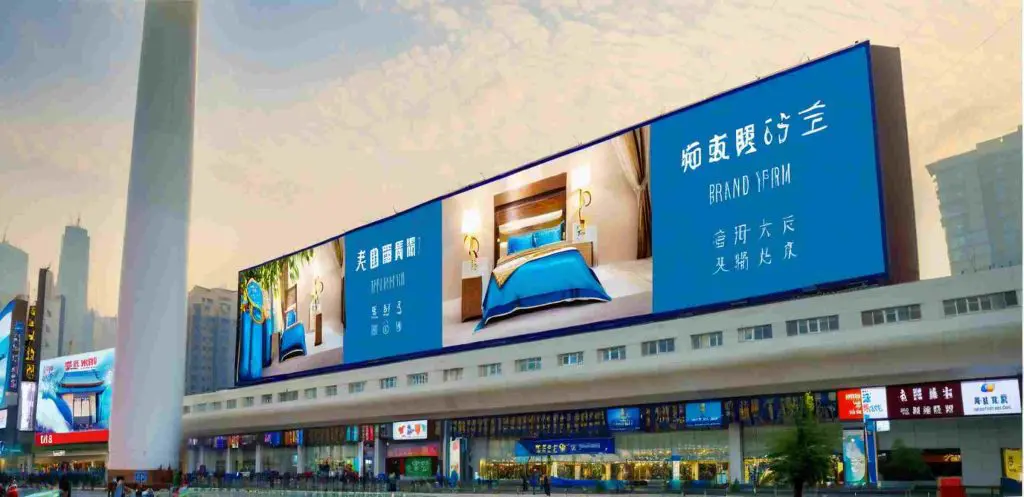
Content Strategy for Outdoor Displays
The way people interact with outdoor LED walls is very different from indoor setups. Since viewers are often walking or driving by, content must be:
- Bold and simple: Large fonts, high-contrast visuals, and minimal clutter work best.
- Motion-friendly: Smooth animation or video loops catch attention more than static images.
- Time-sensitive: Outdoor displays are often used to deliver real-time updates (weather, traffic, event info).
- Daypart-aware: Some systems change content based on time of day or lighting conditions.
A good outdoor LED wall isn’t just bright—it’s smart in how it communicates.
Common Outdoor Applications
Outdoor LED video walls are used in a growing number of applications. Some of the most popular include:
- Billboards and digital signage along highways and urban streets.
- Stadium screens for live events, replays, and sponsor ads.
- Building façades that double as dynamic art installations or advertisements.
- Public transport hubs, showing schedules, alerts, or promotional content.
- Shopping centers and plazas, used for branding and promotions.
- Concerts and festivals, as part of stage backdrops and crowd engagement.
In many of these cases, LED walls are a replacement for traditional static signage, offering the flexibility to change messages instantly and attract more attention.
Cost Breakdown for Outdoor LED Walls
Outdoor-rated LED walls cost more than indoor ones due to additional weatherproofing, higher brightness, and stronger construction.
Here’s a simplified price comparison:
| LED Wall Type | Pixel Pitch Range | Brightness (nits) | Approx. Price per m² (USD) | Notes |
| Basic Outdoor Series | 10mm – 16mm | 5,000 – 6,000 | $600 – $1,200 | For long-distance, roadside use |
| Mid-Range Outdoor | 6mm – 10mm | 6,000 – 7,000 | $1,200 – $2,500 | Common in retail and public spaces |
| High-End Outdoor (4K+) | 3mm – 5mm | 7,000 – 9,000+ | $3,000 – $6,000+ | Premium events, stadiums, city centers |
Costs vary based on brand, size, and complexity. Also consider supporting components like control systems, cabling, power supply, and mounting structures.
Maintenance and Lifespan
A properly installed outdoor LED video wall can last 7 to 10 years or more, depending on usage and climate. Regular maintenance includes:
- Cleaning surfaces to prevent dust and grime buildup
- Checking for dead pixels or color imbalance
- Ensuring fans and ventilation are working properly
- Updating content and software as needed
Many manufacturers offer weather warranties and service plans to ensure longevity.
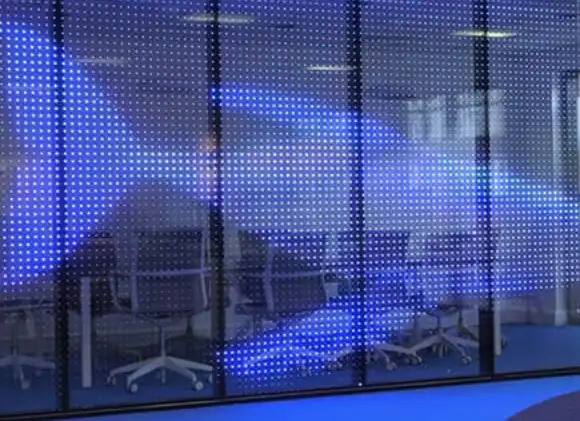
Where to Buy Outdoor LED Video Walls: Why Choose Us
When it comes to installing an outdoor LED video wall, finding the right manufacturer is just as important as choosing the right product. You need a supplier who not only delivers high-performance displays but also understands the challenges of outdoor environments — from weatherproofing to long-distance visibility.
That’s where reissdisplay stands out.
We specialize in high-quality outdoor LED video walls with a wide range of pixel pitches, brightness levels, and structural options to meet different needs and budgets. Whether you’re looking for a cost-effective solution for highway billboards or a high-resolution display for a stadium or public square, we have the right product for you.
For large-scale displays where long-distance viewing is key, our P10 outdoor series offers excellent brightness and weather resistance at one of the most competitive prices on the market — ideal for roadside signage and fixed-location advertisements. For more detail-focused environments like plazas or retail exteriors, our P6.67 and P4 models deliver sharper images with higher pixel density and stronger contrast, all while maintaining durability with IP65–IP66 rated protection.
If you’re looking for premium-level clarity, our P2.9 series offers stunning resolution, ultra-high brightness, and smooth playback — perfect for professional events, concerts, or urban installations that demand visual impact.
We also offer full support for installation planning, remote system configuration, and long-term service partnerships. And because we manufacture and ship directly from China, our pricing is significantly more competitive compared to many international resellers — without compromising on quality.
If you’re ready to transform your outdoor space with a powerful LED video wall, reach out to our team for a tailored recommendation and a fast quote. We’re here to make it simple, affordable, and effective.
Frequently Asked Questions About Outdoor LED Video Walls
- Can I use an indoor LED wall outdoors temporarily?
No, indoor models aren’t designed to withstand moisture, UV rays, or high temperatures. Even short exposure to outdoor elements can cause damage.
- Do outdoor LED walls work at night and in rain?
Yes. Outdoor models are weather-sealed and visible even in low-light or rainy conditions. Many even include automatic brightness adjustment for night viewing.
- Can I control outdoor LED walls remotely?
Absolutely. Most modern systems allow remote control via the cloud or local networks, enabling updates from anywhere.
- How long does it take to install an outdoor LED wall?
It depends on the size and complexity. A small wall might take a few days; a large stadium screen could take weeks including structural setup and testing.
- Are permits required for outdoor installations?
In most cities, yes. You’ll likely need approval for electrical work, signage regulations, and possibly environmental impact—especially in public or historic areas.
So, can LED video walls be used outdoors? Without a doubt. In fact, they’re one of the most powerful tools for dynamic outdoor communication today. But success depends on choosing the right product for your environment, planning for proper installation, and tailoring your content for outdoor impact.
With the right setup, an outdoor LED video wall can transform any space into a living, digital canvas that commands attention—rain or shine, day or night.





